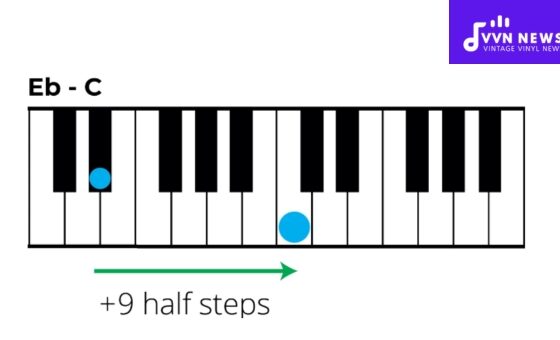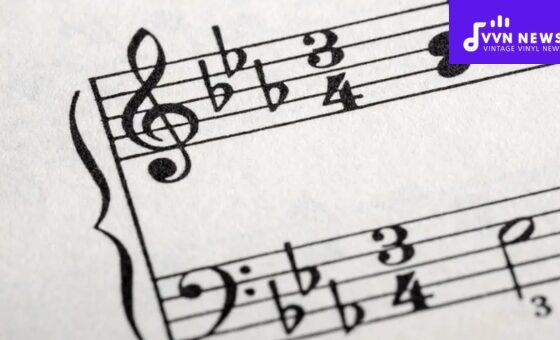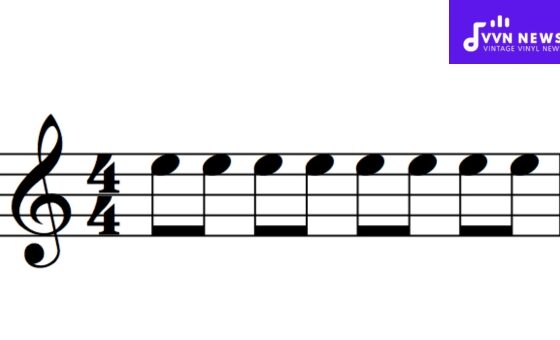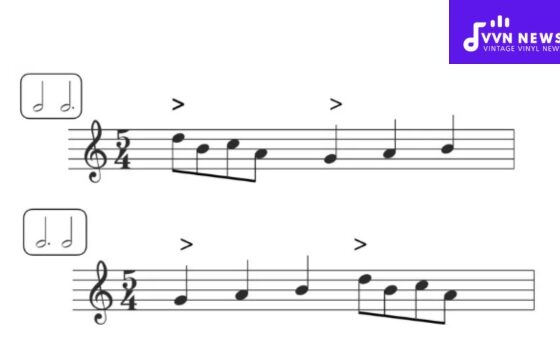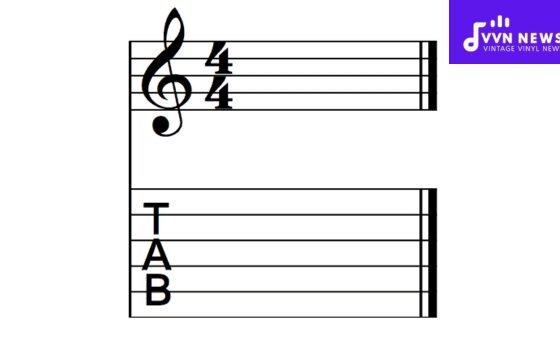The Romantic music period, a fascinating era in the history of classical music, spanned from the late 18th to the early 20th century.
During this time, composers explored new emotional depths and unleashed their creative potential like never before.
In this article, we will delve into the key characteristics of the Romantic music period and take a closer look at some of the renowned composers that emerged during this captivating era.
The Romantic music period was characterized by a shift towards individual expression and a rejection of strict musical forms.
Composers sought to evoke intense emotions and depict vivid imagery through their compositions. The music of this era is known for its rich melodies, dramatic contrasts, and emotional impact.
From passionate love themes to grand orchestral works, it was a time when composers pushed artistic boundaries and created some of the most iconic masterpieces in classical music history.
What Was the Romantic Music Period and Why Is It Significant?
The Romantic music period, which flourished from the late 18th to the early 20th century, was a transformative era in the history of classical music.
Characterized by its emphasis on individual expression and emotional depth, this period marked a departure from the more restrained style of the Classical era that came before it.
Significance of the Romantic Music Period
The significance of the Romantic music period lies in its profound impact on shaping modern musical aesthetics.
During this time, composers broke free from traditional constraints and ventured into uncharted artistic territories.
This period saw an explosion of creativity, as composers sought to evoke intense emotions and portray vivid imagery through their compositions.
The Romantic music period introduced several key innovations that forever changed the landscape of classical music.
It placed a strong emphasis on individualism and subjectivity. Composers embraced their unique artistic voices and used music as a means to express their innermost thoughts and emotions.
The use of rich melodies became prevalent during this era. Composers created sweeping lyrical lines that resonated with audiences on an emotional level. The melodies were often highly expressive, ranging from tender and introspective to passionate and fiery.
Another notable characteristic of Romantic music was its use of dramatic contrasts. Composers skillfully employed sudden shifts in dynamics, tempo, tonality, and orchestration to create moments of tension and release within their compositions.
The Romantic era witnessed significant advancements in harmonic language. Composers experimented with chromaticism (the use of notes outside traditional scales), pushing traditional tonal boundaries further than ever before.
The significance of this period lies not only in its ability to inspire deep emotions but also in its lasting influence on subsequent musical movements.
Also Read: 20 Best Eq Pedals For Perfect Tone [Shape Your Guitar Sound]
How Did Music Transition from the Classical Era to the Romantic Era?

The transition from the Classical era to the Romantic era in music was not a sudden change but rather a gradual evolution. A combination of societal, technological, and artistic factors contributed to this shift.
1. Societal Changes
- Rise of Individualism: The ideals of the Enlightenment, which promoted individual freedom and expression, had a profound impact on society. This newfound focus on personal emotions and experiences influenced artists, including composers.
- Industrial Revolution: The rapid advancements in technology during the Industrial Revolution transformed society and had implications for music as well. The increasing availability of musical instruments and improvements in transportation allowed for greater access to music and performances.
2. Artistic Developments
- Sturm und Drang Movement: Before the Romantic era, there was a period known as Sturm und Drang (storm and stress) that emerged as a precursor to Romanticism. Composers like Haydn, Mozart, and Beethoven explored new emotional territories through expressive harmonies and dramatic contrasts.
- Expansion of Musical Forms: Composers during this transitional period experimented with extending traditional musical forms such as symphonies, concertos, sonatas, and operas. They added more movements or expanded existing ones to allow for greater emotional depth within their compositions.
3. Technological Advancements
- Pianoforte: The invention of the pianoforte (the precursor to today’s modern piano) revolutionized keyboard instruments during this time. Its ability to produce varying dynamics allowed composers to explore a wider range of expressive possibilities.
- Expansion of Orchestra: With technological advancements came an expansion of the orchestra. Composers began writing larger orchestral works that comprised more diverse instruments, allowing for richer textures and grander soundscapes.
4. Musical Style Characteristics
- Emphasis on Individual Expression: Composers sought to convey their personal experiences and emotions through music, breaking away from the structured and more objective style of the Classical era.
- Intensified Emotional Expression: The music of the Romantic era aimed to elicit intense emotions from listeners. Composers explored a wide range of emotions, from deep sorrow and longing to ecstatic joy and passion.
- Expansion of Harmonic Language: Composers started exploring new harmonic possibilities, including more dissonance and chromaticism. This contributed to a richer and more complex musical language.
The transition from the Classical era to the Romantic era manifested as a gradual shift in societal values, artistic developments, technological advancements, and changes in musical style.
These factors combined to create a musical landscape that embraced individual expression, heightened emotional intensity, and larger orchestral forces.
What Defines the Romanticism Art in Music?
Romanticism in music is defined by its emphasis on individual expression, intense emotions, and a departure from traditional constraints.
It was a reaction against the rationality and formality of the preceding Classical era. Here are some key characteristics that define Romanticism in music:
- Subjectivity and Individualism: Composers sought to express their personal feelings and experiences through their musical compositions. They focused on exploring the depths of human emotion, often drawing inspiration from literature, nature, and personal experiences.
- Emotional Intensity: Romantic music aimed to evoke powerful emotions in listeners. Composers used expressive melodies, harmonies, and dynamic contrasts to create dramatic emotional impact.
- Expanded Range of Expression: The Romantic period saw an expansion of musical forms and genres. Composers experimented with new forms such as tone poems, symphonic poems, and character pieces. These new forms allowed for greater freedom in storytelling and expression.
- Colorful Orchestration: Composers took advantage of technological advancements in instrument construction and expanded the size of orchestras to create richly textured soundscapes. They used orchestral colors to enhance the emotional impact of their music.
- Nationalistic Elements: Composers incorporated folk tunes, themes, or rhythms from their respective countries into their works as a way to celebrate their cultural heritage.
- Nature Imagery: Nature played a significant role in Romantic music compositions, with composers often drawing inspiration from landscapes or natural phenomena such as storms or sunsets.
- Exoticism: Some composers drew inspiration from exotic cultures or distant lands, incorporating elements from other cultures into their compositions to evoke a sense of adventure or escapism.
- Longer Forms: Composers embraced longer musical forms such as symphonies and operas to allow for more expansive storytelling within their compositions.
- Virtuosity: The Romantic period saw an increased focus on virtuosic playing techniques, showcasing the technical abilities of performers and pushing the boundaries of instrumental capabilities.
- Improvisation: Improvisation became an essential part of musical expression during this time, with performers given greater freedom to interpret and embellish their parts.
The Romantic period in music was characterized by its unapologetic focus on the individual, exploration of human emotion, and breaking away from traditional conventions to create deeply moving and expressive compositions.
Also Read: 13 Classic Video Game Songs From the Golden Era
Key Features of the Romantic Period in Music

The Romantic period in music saw an array of distinctive features that set it apart from previous eras.
These key characteristics defined the aesthetic and essence of Romantic music, allowing composers to push artistic boundaries and create compositions that resonated deeply with their audiences.
- Emotion and Expression: The Romantic period placed a strong emphasis on expressing deep emotions through music. Composers sought to elicit powerful feelings from listeners, whether it be love, longing, joy, or despair.
- Individualism: The concept of individual expression became paramount during this era. Composers embraced their unique artistic voices and used music as a means to convey their innermost thoughts and experiences.
- Rich Melodies: One hallmark of Romantic music is its use of lush and memorable melodies. Composers crafted sweeping lyrical lines that tugged at the heartstrings of audiences and evoked a wide range of emotions.
- Dramatic Contrasts: The Romantic period introduced dramatic contrasts within compositions, employing sudden shifts in dynamics, tempo, tonality, and orchestration to create moments of tension and release.
- Chromaticism: Composers experimented with chromaticism during this era, using notes outside traditional scales to add colorful and emotionally charged harmonies to their compositions.
- Programmatic Music: Programmatic music gained popularity in the Romantic period. Composers sought to tell stories or depict scenes through their compositions, often accompanied by written program notes or titles that provided context for the listener.
- Expanded Orchestra: As compositional demands grew more ambitious, orchestras expanded in size and scope during the Romantic period. Instrumentation became more diverse, allowing for richer textures and greater opportunities for dramatic expression.
- Nationalistic Themes: Many composers during this time incorporated nationalistic themes into their works as a way to connect with their cultural heritage, celebrate their countries’ unique musical traditions, and express a sense of national identity.
These key features defined the Romantic period and shaped the music that emerged during this era.
It was a time of innovation, passion, and boundless creativity, leaving a lasting influence on the world of classical music.
Musical Forms of the Romantic Era
The Romantic era saw a significant expansion and evolution of musical forms. Composers experimented with new structures and approaches, pushing the boundaries of traditional forms while still retaining their essence.
Here are some of the main musical forms that emerged during this period:
Symphony
The symphony, a long-form orchestral composition consisting of multiple movements, continued to be a prominent genre during the Romantic era.
Composers like Ludwig van Beethoven and Gustav Mahler expanded the symphony’s scope, creating works of epic proportions that explored a wide range of emotions.
Concerto
The concerto also thrived during this period. A concerto is a composition in which a soloist or group of soloists performs with an orchestra.
Composers like Felix Mendelssohn and Pyotr Ilyich Tchaikovsky composed captivating concertos for various instruments, showcasing virtuosity and melodic brilliance.
Lied
The lied, derived from the German word for “song,” was an essential genre in the Romantic era. These art songs typically combined poetry and music, featuring a solo voice accompanied by piano.
Composers such as Franz Schubert and Robert Schumann crafted numerous lieder that captured the essence of romantic poetry.
Opera
Opera experienced a resurgence during the Romantic period. The combination of vocal music, orchestral accompaniment, and dramatic storytelling captivated audiences around Europe.
Famous composers like Giuseppe Verdi and Richard Wagner composed grand operas that showcased powerful emotions and enveloped listeners in captivating narratives.
Chamber Music
Chamber music played an important role during this period as well. Compositions for small ensembles, such as string quartets or piano trios, highlighted intimate expression and intricate interplay between musicians.
Prominent composers like Johannes Brahms and Clara Schumann made significant contributions to chamber music repertoire.
Programmatic Music
Programmatic music, a genre characterized by its narrative or descriptive content, emerged as a distinct form during the Romantic era.
Composers like Hector Berlioz and Richard Strauss composed works that aimed to depict specific stories, scenes, or emotions through music.
The Romantic era gave rise to these diverse and innovative musical forms, each offering unique opportunities for composers to express their artistic visions and convey the depth of human emotions.
The exploration of these forms challenged traditional conventions and contributed to the richness and diversity of classical music during this period.
Also Read: How To Eq Vocals Professionally In 2025 [Step by Step Guide]
Evolution of Vocal Music During the Romantic Period

During the Romantic period, vocal music underwent a significant evolution.
Composers explored new possibilities in vocal expression, pushing the boundaries of traditional forms and creating works of breathtaking beauty and emotional depth.
Here are some key aspects of the evolution of vocal music during this period:
Expansion of Lyrical Melodies
One defining characteristic of the Romantic era was an emphasis on expressive melodies.
Composers created long, sweeping lines that allowed for emotional storytelling through vocal music.
These melodies often had wide-ranging intervals and intricate ornamentation, showcasing the virtuosity of singers.
Rise of Programmatic Music
Programmatic music, where music is composed to convey a specific narrative or story, gained popularity during this period.
Composers used vocal works to paint vivid musical pictures and bring characters and stories to life.
Examples include Berlioz’s “Symphonie Fantastique” and Wagner’s “Tristan und Isolde,” which showcase the power of storytelling through vocal expression.
Exploration of Nationalistic Styles
Composers during the Romantic period sought to create music reflective of their national identities.
This led to an exploration of folk songs and traditions in vocal compositions.
For instance, composers such as Dvořák incorporated Czech folk melodies into their works, while Smetana’s operas embraced themes inspired by Czech history.
Focus on Expressive Text-setting
In vocal music, composers paid great attention to setting text in a way that enhanced its meaning and emotional impact.
They carefully matched musical phrases to words, heightening the dramatic effect or emphasizing certain emotions conveyed by the lyrics.
Expansion of Choral Music
The Romantic period witnessed a surge in choral compositions. Composers like Brahms and Verdi wrote grand choral works that showcased the power and beauty of massed voices singing together.
These compositions often addressed profound themes like love, patriotism, and spirituality.
With its emphasis on emotion, storytelling, and individual expression, the evolution of vocal music during the Romantic period laid the foundation for future developments in opera, art song, and choral works.
It forever transformed how composers approached vocal composition and left a lasting legacy in the world of classical music.
Why Is the Romantic Era Referred to as the ‘Golden Age’ of Opera?
The Romantic era is often referred to as the ‘Golden Age’ of opera due to its profound impact on the development and popularity of this art form.
During this period, opera flourished like never before, captivating audiences with its compelling stories, emotional depth, and extravagant productions.
Let’s delve into some of the key reasons why the Romantic era holds this esteemed title.
- A New Focus on Dramatic Expression: In the Romantic era, opera composers sought to evoke intense emotions and engage audiences on a deep level. They composed music that perfectly complemented the dramatic narrative, allowing characters to express their innermost thoughts and feelings through powerful arias and ensembles.
- Expansion of Orchestra and Chorus: The Romantic era witnessed significant advancements in instrumental techniques, leading to an expansion of the orchestra’s size and capabilities. Composers began including more complex orchestral scores in their operas, resulting in richer musical textures and more nuanced storytelling. The chorus also played a more prominent role in operatic compositions, adding depth and grandeur to performances.
- Technological Advancements: The Romantic era coincided with several technological advancements that greatly enhanced the production quality of operas. Gas lighting allowed for dramatic lighting effects on stage, making performances visually stunning. Improved theater acoustics further enhanced audience immersion, ensuring that every note could be heard with greater clarity.
- Emphasis on Realism: Unlike previous eras where opera plots were often whimsical or historical, Romantic composers turned their attention towards stories depicting real human emotions and experiences. They explored themes such as love, passion, jealousy, tragedy, and redemption in a way that resonated deeply with audiences.
- Operatic Superstars: The Romantic era saw the rise of extraordinary vocal talents who became synonymous with operatic greatness. Singers such as Maria Callas, Enrico Caruso, and Giuseppe Verdi elevated opera to new heights with their virtuosic performances, captivating audiences around the world.
- Melodic Richness: Romantic-era composers crafted melodies that were both memorable and emotionally evocative. These melodies became the backbone of operas, carrying the narratives forward and leaving a lasting impression on listeners.
- National Identity: Composers in the Romantic era sought to establish a sense of national identity through their operas. They incorporated distinctive folk melodies and motifs from their respective countries, creating works that spoke directly to audiences’ cultural roots.
The Romantic era truly represented a pinnacle in operatic history, where artistic expression soared to extraordinary heights.
Its legacy continues to be celebrated today as opera houses across the globe honor and perform the masterpieces created during this ‘Golden Age.’
Virtuosi Players of the Romantic Period

The Romantic period in music witnessed the rise of virtuoso performers, whose technical prowess and captivating stage presence astounded audiences.
These virtuosi players were masters of their respective instruments and played a crucial role in shaping the music of the time. Let’s delve into the world of these extraordinary musicians and their contributions.
Piano Virtuosos: Franz Liszt
Franz Liszt, often regarded as the greatest piano virtuoso of his time, pushed the boundaries of piano technique to new heights.
His dazzling performances captivated audiences worldwide, earning him a reputation as one of the most electrifying pianists in history.
Known for his incredible speed, precision, and dramatic flair, Liszt’s compositions and performances showcased his technical brilliance.
His works such as “La Campanella” and “Hungarian Rhapsody No. 2” remain staples of the piano repertoire.
Violin Virtuosos: Niccolò Paganini
Niccolò Paganini was a legendary violinist whose exceptional skills revolutionized violin playing during the Romantic period.
His astonishing virtuosity left audiences spellbound with his lightning-fast passages and astonishing control over his instrument.
Paganini’s innovations greatly expanded the violin technique, introducing previously unexplored techniques such as double stops, rapid bowing techniques, and harmonics.
His compositions like “Caprice No. 24” demonstrate not only technical brilliance but also emotional depth.
Operatic Divas: Maria Callas
Opera singers also made significant contributions to the virtuoso tradition during this era. Maria Callas emerged as one of the most iconic sopranos of all time, renowned for her powerful voice and dramatic interpretations on stage.
Her ability to convey raw emotion through her singing captivated audiences worldwide. Callas was known for her exceptional vocal range, agility, and ability to portray complex characters with depth and nuance. Her performances in operas like “Tosca” and “Norma” remain legendary to this day.
Other Virtuosos
- Adolphe Sax (saxophone): The Belgian-born inventor of the saxophone, Adolphe Sax, showcased the capabilities of his new instrument through virtuosic performances.
- Carl Baermann (clarinet): Known for his virtuosity in the clarinet, Carl Baermann composed an array of challenging works for his instrument.
- Camille Saint-Saëns (piano and organ): Apart from being a renowned composer, Saint-Saëns was also a highly skilled pianist and organist, known for his technical precision.
The virtuosi players of the Romantic period not only elevated their respective instruments but also inspired composers to create complex and demanding compositions.
Their technical brilliance and captivating stage presence continue to influence musicians to this day. Their legacy lives on in recordings, compositions dedicated to them, and the ongoing pursuit of excellence in musical performance.
How Did Musical Instruments Develop and the Orchestra Expand in the Romantic Era?
The Romantic era brought about significant developments in musical instruments, as well as an expansion of the orchestra.
Composers sought to explore new tonal possibilities and create grander, more expressive soundscapes.
These advancements not only enriched the musical experience but also paved the way for future innovations in classical music.
1. Developments in Instrument Design
During the Romantic era, several instruments underwent important advancements in their design and construction. Here are some key examples:
- Piano: The piano saw notable improvements during this period. Innovations such as a stronger frame, double escapement action, and increased string tension led to a more powerful and expressive instrument capable of producing a broader dynamic range.
- Woodwind Instruments: Woodwind instruments benefited from improved mechanisms, allowing for greater precision and agility in playing. These developments contributed to the expressiveness of solos and ensemble passages.
- Brass Instruments: Valved brass instruments emerged during this era, replacing their earlier counterparts with limited range. The invention of valves allowed for greater flexibility and expanded possibilities for melodic expression.
2. Expansion of the Orchestra
The Romantic era witnessed a significant expansion in the size and composition of orchestras. Composers desired larger ensembles to achieve greater richness and depth of sound. Some notable changes include:
- String Section: String sections grew considerably, with an increased number of players in each section. The addition of more string players enhanced the overall richness and power of orchestral textures.
- Wind Section: The wind section expanded to include a wider range of woodwind and brass instruments. This resulted in richer harmonies, virtuosic solo passages, colorful orchestrations, and heightened emotional intensity.
- Percussion Section: Percussion instruments found their place within the orchestra during this period. Timpani became an integral part of symphonic compositions, adding impact, rhythm, and dramatic effect.
3. Orchestration Techniques
Composers in the Romantic era developed innovative orchestration techniques to maximize the expressive potential of their compositions. These techniques included:
- Coloristic Effects: Composers explored the timbral possibilities of different instrument combinations, creating evocative sound colors and textures. By blending instruments in unique ways, they could achieve specific emotional effects.
- Expanded Dynamic Range: The Romantic era showcased a greater dynamic range than previous periods. Composers exploited extreme contrasts in volume to heighten the emotional impact of their works.
- Thick Textures: With larger orchestras and expanded instrumental sections, composers were able to create dense and intricate musical textures. This allowed for more complex harmonies and counterpoint.
The developments in musical instruments and orchestras during the Romantic era revolutionized the possibilities for composers.
Through expanded sound palettes, increased expressiveness, and technical innovations, musicians were able to convey a wealth of emotions on a grand scale.
Most Famous Composers of the Romantic Period and Their Contributions
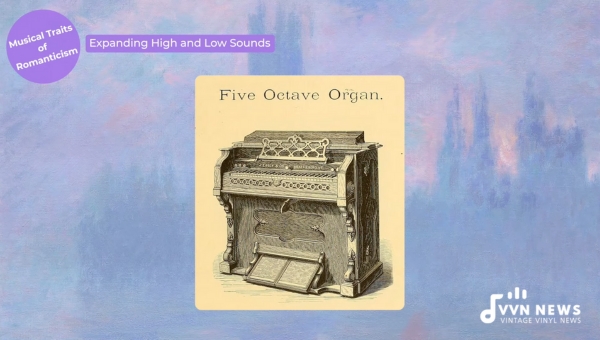
The Romantic music period saw the rise of many legendary composers who made groundbreaking contributions to classical music.
Let us introduce you to some of the most influential figures of this era:
1. Ludwig van Beethoven (1770-1827)
Beethoven is often considered a bridge between the Classical and Romantic periods, as his compositions embodied both styles.
His symphonies, such as the Fifth and Ninth, showcased his mastery of dramatic contrasts and emotional intensity.
Beethoven’s works pushed the boundaries of musical expression and left an indelible mark on future generations.
2. Franz Schubert (1797-1828)
Schubert’s compositions reflected his deep sensitivity and ability to convey profound emotions through music.
His art songs, or Lieder, demonstrated his talent for crafting beautiful melodies that perfectly complemented the poetry they were set to.
Schubert’s lieders have become staples of vocal repertoire, with “Erlkönig” being a standout example.
3. Frédéric Chopin (1810-1849)
Known as a virtuoso pianist and a master of the keyboard, Chopin composed primarily for the piano.
His compositions were marked by their exquisite melodies, delicate nuances, and emotional depth.
From enchanting nocturnes to energetic polonaises, Chopin’s works remain central to the piano repertoire.
4. Richard Wagner (1813-1883)
Wagner revolutionized opera with his concept of “Gesamtkunstwerk,” or total artwork, which fused music, drama, poetry, and stagecraft in an unprecedented manner.
His operas such as “Tristan und Isolde” and “The Ring Cycle” pushed harmonic boundaries and delved into profound psychological depths.
5. Pyotr Ilyich Tchaikovsky (1840-1893)
Tchaikovsky’s compositions often combined Russian folk influences with Western classical traditions.
His ballets, including “Swan Lake,” “The Nutcracker,” and “Sleeping Beauty,” are beloved for their captivating melodies, lush orchestration, and vibrant storytelling.
6. Johannes Brahms (1833-1897)
Brahms established himself as a leading composer of the Romantic period, composing in both traditional forms like symphonies and chamber music and innovative works that pushed the boundaries of tonality.
His symphonies, piano concertos, and German Requiem stand as remarkable achievements in the genre.
7. Gustav Mahler (1860-1911)
Known for his expansive symphonies and song cycles, Mahler’s compositions were epic in scale and emotional intensity.
He skillfully blended orchestral grandeur with intimate introspection to create deeply moving musical experiences.
Each of these composers played a significant role in shaping the Romantic music period.
Their masterpieces continue to captivate audiences worldwide, ensuring their everlasting legacy in the realm of classical music.
FAQs About The Romantic Music Period
What led to the transition from the Classical era to the Romantic era in music?
The transition was driven by a desire among composers to break free from conventional rules and explore their artistic individuality.
How did composers in the Romantic era depict emotions through music?
Composers in the Romantic era used rich melodies, dramatic contrasts, and harmonic language to evoke intense emotional responses from their listeners.
How did vocal music evolve during the Romantic period?
Vocal music in the Romantic period experienced a surge in popularity, with composers creating expressive and emotionally charged songs and operas.
Who were some of the most famous composers of the Romantic period?
Some renowned composers of this era included Ludwig van Beethoven, Frederic Chopin, Franz Schubert, Johannes Brahms, and Pyotr Ilyich Tchaikovsky.
What made the Romantic era significant for orchestras and musical instruments?
The Romantic era witnessed advancements in instruments, with new technologies improving their sound quality. Orchestras also expanded in size and began to feature more diverse instrumentation for greater orchestral colors.
Conclusion
The Romantic music period, spanning the late 18th to the early 20th century, was a transformative era in classical music history.
It revolutionized the way composers approached their art, with a focus on individual expression and emotional depth.
The Romantic period introduced rich melodies, dramatic contrasts, and expanded harmonic language.
Composers like Beethoven, Chopin, Wagner, and Tchaikovsky left an indelible mark on this era with their iconic compositions.
The legacy of the Romantic music period continues to influence and inspire musicians to this day.




